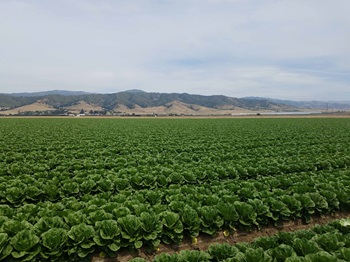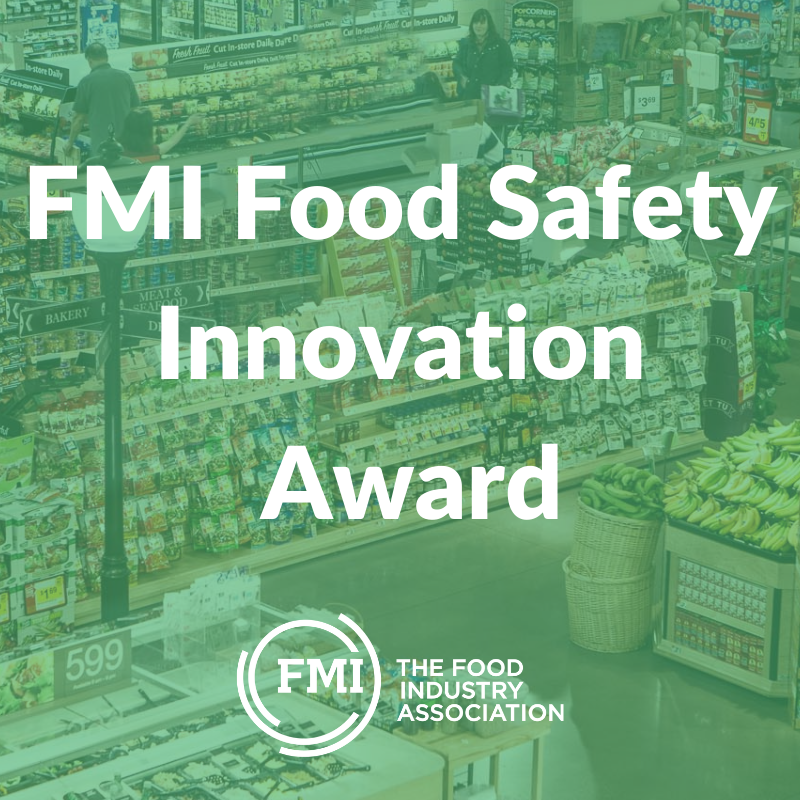By: Ashley Eisenbeiser, MS, CFS, Senior Director, Food and Product Safety Programs, FMI

Leafy greens outbreaks have a long history. From 2009 – 2018 there have been 40 Shiga toxin-producing E. coli (STEC) outbreaks linked to leafy greens accounting for 1,212 illnesses, 77 cases of hemolytic uremic syndrome, and 8 deaths. Of these, romaine accounted for 54% of these outbreaks – more than any other leafy green.[1] With two large romaine outbreaks, 2018 was a turning point in terms of the safety of leafy greens.
Since the 2018 E. coli O157:H7 outbreaks linked to romaine lettuce, the food industry, FDA and many other stakeholders have embarked on a collaborative journey to improve the safety of leafy greens. These efforts include the development of best practice guides, strengthening of food safety requirements for leafy green suppliers, implementing provenance labeling to identify growing region on packages of romaine lettuce, conducting traceability pilots for leafy greens, launching a number of researched projects, among many others.
Despite these efforts and the significant progress that has been made so far, there is still opportunity to improve the safety of leafy greens, as outbreaks continue to occur. FDA recently announced their plans to utilize the knowledge gained thus far and continue their work to improve the safety of leafy greens. The Agency has updated the Leafy Green Shiga-toxin producing E. coli (STEC) Action Plan, which builds upon the original Leafy Green Action Plan released in 2020, and outlines actions and approaches FDA plans to take in 2021 in each of the three priority areas—(1) Prevention, (2) Response and (3) Addressing Knowledge Gaps.
Since the 2018 romaine lettuce outbreaks, FDA has published several investigation reports detailing the factors potentially contributing to the contamination of leafy greens in the outbreaks of E. coli O157:H7. Most recently, FDA released a report on the investigation into the Fall 2020 outbreak of E. coli O157:H7 illnesses linked to the consumption of leafy greens which describes findings from FDA’s investigation into the outbreak that occurred this fall.
Taking into account the findings outlined in this most recent report along with findings from previous outbreak investigations, FDA has identified key trends related to issues of a reoccurring outbreak strain, a reoccurring region, and reoccurring issues around adjacent and nearby land use that are critical to understanding the contamination of E. coli O157:H7 that occurred in 2020 and previous years.
The same E. coli O157:H7 outbreak strain has been associated with numerous foodborne illness outbreaks from multiple years that have all been associated with leafy greens grown in the California Central Coast growing regions. In outbreaks dating back to 2013, outbreak investigation findings have identified the proximity of cattle on land adjacent to or nearby leafy greens growing fields as a likely contributing factor for contamination of leafy greens. The intestinal tracts of animals, specifically cattle, are known to be a reservoir and a persistent source of E. coli O157:H7.
Because of the reoccurring issues associated with this strain of pathogenic E. coli O157:H7, FDA recommends that leafy green growers in the California Central Coast Growing Region (encompassing the Salinas Valley and Santa Maria growing regions) to “consider this particular strain of E. coli O157:H7 a reasonably foreseeable hazard.” What does that mean? Under the FDA’s Produce Safety Rule, farms must take all measures necessary to identify, and not harvest, covered produce that is likely to be contaminated with a known or reasonably foreseeable hazard and handle harvested covered produce during covered activities in a manner that protects against contamination with known or reasonably foreseeable hazards.
Actions to Help Prevent the Contamination of Leafy Greens:
- Conduct a comprehensive hazard analysis to identify known or reasonably foreseeable hazards and determine the risk and appropriate controls required for all identified hazards.
- Implement measures to prevent contamination of leafy greens and agricultural water sources with known or reasonably foreseeable hazards.
- Assess, evaluate and control hazards associated with adjacent and nearby land use, including, animal feeding and grazing operations, regardless of size; wild or domestic animal activity; or any other use that could pose a risk. If it likely that grazing animals, working animals, or animal intrusion will contaminate leafy greens, then you should take all measures reasonably necessary to identify, and not harvest, leafy greens that is reasonably likely to be contaminated with a known or reasonably foreseeable hazard.
- Assess, evaluate and control hazards associated with all water that has or could have any contact either directly or indirectly with adjacent and nearby land, in particular, adjacent and nearby land with animal feeding and grazing operations, regardless of size; wild or domestic animal activity; any other use that could pose a risk. All identified hazards should be assessed, evaluated and controlled by implementing measures to prevent contamination of leafy greens.
- Immediately prior to and during harvest, conduct a visual assessment of the growing area and all leafy greens that will be harvested. If significant evidence of contamination is found, take all measures reasonably necessary to identify, and not harvest, leafy greens that is reasonably likely to be contaminated with a known or reasonably foreseeable hazard.
- Growers of leafy greens should have a food safety management system in place and certified to a program with strong food safety requirements, such as GFSI recognized certification programs.
- Conduct a root cause analysis when a food safety event occurs such as an outbreak, recall and identification of a foodborne pathogen (e.g., in growing environment, in agricultural water, in soil amendments, in the product, etc.) to identify how contamination occurred.
- Buyers should establish a supplier approval program and specifications for leafy greens that should include food safety requirements.
- Work to improve traceability throughout the supply chain. Industry stakeholders should collaboratively work toward development and implementation of practical, widely adopted, standardized systems that would allow immediate access and sharing of critical source identifier information for all leafy greens.
Download FMI’s Recommendations for Food Retailers and Wholesalers on Sourcing Leafy Greens
[1] Marshall, K. E. et al. (2020). Lessons Learned from a Decade of Investigations of Shiga Toxin–Producing Escherichia coli Outbreaks Linked to Leafy Greens, United States and Canada. Emerging Infectious Diseases, 26(10), 2319-2328. https://dx.doi.org/10.3201/eid2610.191418


 Industry Topics address your specific area of expertise with resources, reports, events and more.
Industry Topics address your specific area of expertise with resources, reports, events and more.
 Our Research covers consumer behavior and retail operation benchmarks so you can make informed business decisions.
Our Research covers consumer behavior and retail operation benchmarks so you can make informed business decisions.
 Events and Education including online and in-person help you advance your food retail career.
Events and Education including online and in-person help you advance your food retail career.
 Food Safety training, resources and guidance that help you create a company food safety culture.
Food Safety training, resources and guidance that help you create a company food safety culture.
 Government Affairs work — federal and state — on the latest food industry policy, regulatory and legislative issues.
Government Affairs work — federal and state — on the latest food industry policy, regulatory and legislative issues.
 Get Involved. From industry awards to newsletters and committees, these resources help you take advantage of your membership.
Get Involved. From industry awards to newsletters and committees, these resources help you take advantage of your membership.
 Best practices, guidance documents, infographics, signage and more for the food industry on the COVID-19 pandemic.
Best practices, guidance documents, infographics, signage and more for the food industry on the COVID-19 pandemic.
